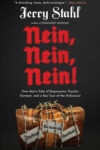[This piece originally appeared in the Full Stop Quarterly Issue #5. The Quarterly is available to download or subscribe here.]
Twelve days after the election I walked into Minneapolis’s Walker Art Center for a symposium, Avant Museology, co-hosted by the art journal e-flux and the University of Minnesota Press. It had been a long two weeks of attending events in two registers: protests and meetings, on the one hand, all in the early, bewildered stage of articulation; and left-utopian or intellectual events on the other, these more bewildered than the former, trading in their typical polish and fluency for an uncertainty or even embarrassment of purpose. More than usual the terrible world of practical politics intruded; it hung spectrally over everything and appeared equally impossible to ignore or address with adequate urgency. Stuck in this impasse, people said strange things. During the Q & A of an event for Jacobin editor Peter Frase’s book, Four Futures: Life After Capitalism, the audience transitioned from speculating about Frase’s topic—building socialism or falling into the abyss—to speculating about a fictive dive bar in Iowa. “It’s one thing to talk about politics in this room,” one woman said, turning her neck and gesturing around her. “But they might not be thinking the same way in a dive bar in Iowa.” Each following question detoured with perplexing insistence into musings on the bar. Its image solidified as the night went on, the bar’s unreality matched by an assertion of its familiarity. “I have nothing against dive bars in Iowa,” Frase said after the bar’s third invocation. “Iowa!” someone shouted from behind a bookshelf. The crowd cheered.
The wind swept leaves around my feet as I walked to the symposium. Snow speckled the ground. The night before hundreds of crows descended on my neighborhood with the flap of a heavy curtain, swooping in sheets through the park and leaving the sidewalks that morning spattered white. “The museum of contemporary art might very well be the most advanced recording device ever invented,” the introductory speaker told the crowd at the Walker. The symposium’s opening remarks revolved around museums and their social role, but midway through they sharpened: “What can art contribute to the struggle against nationalism, racism, and fascism?”
As the talks carried on, the election neither vanished nor took center stage. Unlike so much else of the past weeks, it didn’t muddy or embarrass the topic at hand. Instead the study of contemporary art museums and their radical potential acted as an oblique looking glass, refracting the disaster of the day through an odd set of contexts and histories, some long and global in perspective, others slim reminders of Trumpism’s promise to impact things thought marginal and distanced. The mushrooming of global art, saturated by finance capital and saturating the world with gleaming, enormous museums, has already made for a convulsive landscape, one easily caricatured: jet setting elites bouncing from festival to gala, stowing sculptures in foreign tax havens and presiding over the privatization of an art world that has come to stand for the corruptions of globalization. Amid this display of transnational excess, what will this latest shock entail? How will art museums respond to Trump’s tetrad of money, populism, racism, and spectacle?
The symposium took place in two cities, New York and Minneapolis, over two consecutive weekends. The first weekend’s sessions were held at the Brooklyn Museum, with speakers including Liam Gillick, Fred Wilson, Juliana Huxtable, and the ubiquitous, insomniac curator Hans Ulrich Obrist; the second weekend, at the Walker, featured Hito Steyerl, Boris Groys, and Wayne Koestenbaum, the whole event arranged in conjunction with the publication of Avant Museology, the first book under the new e-flux and University of Minnesota Press imprint, e-flux Classics. Edited by the Russian artist Arseny Zhilyaev, Avant Museology gathers writings on museums and revolution by leading figures of the Soviet avant-garde.
That Sunday in Minneapolis Zhilyaev was the symposium’s first speaker. A somber, self-effacing man, dressed conventionally in a black suit and white shirt, Zhilyaev stared down at his notes and introduced the multiple threads woven through fin de siècle Russian avant-garde museology. An apocalyptic tendency, in line with many modernist movements, advocated bulldozing contemporary art’s bourgeois mausoleums, blowing down the institutional doors, and marrying art to life. Slightly more temperate, practically-minded voices envisioned museums as sites for raising ideological consciousness, and a further strand, theorized by Nikolai Federov, viewed the museum as the basis for the immortalization of all humanity and the resurrection of the dead, people past and present preserved to enjoy eternal socialism, with museum space dedicated to all. “Unfortunately,” Zhilyaev said, “it didn’t happen.” But the fervor for preservation lived on, channeling into the Moscow Institute of Brains, established in 1928 and still around today, though inoperative since the fall of communism. There Soviet scientists mummified and studied a “Pantheon of Brains,” including the organs of Lenin, Mayakovsky, Eisenstein, Gorky, and Stalin, with the goal of using brain research to realize the ideal communist subject. A person behind me asked about the relevance of these avant-garde ideas to contemporary art museums in Russia, awash in corporate money and detached from social movements. What space is there for avant-garde museology?
Zhilyaev sighed and sank into resignation. We would have to wait for the revolution, he said, eyes fixed on his notes.
No one else seemed quite as resigned. The featured artists, for the most part, already saw themselves as trying to break free from the museum’s confines, or troubling their location within it. Brazilian artist Jonathas de Andrade described making unauthorized, mock posters for an actually existing museum, Museo do Homem do Nordeste, or Museum of the Man of the Northeast. He took out newspaper classifieds in search of poster models and photographed the men who responded, playing up their masculinity and eroticism, and then hung the posters in a gallery in Sao Paulo whose facade was decorated as if it were the actual Museo do Homem do Nordeste: a series of provocations pursued within the circuitry of the art world. I thought of the Benin artist Meshac Gaba’s traveling exhibition, mock-titled Museum of Contemporary African Art (1997–2002), a fake museum within a museum that keeps expanding—one exhibition is called Museum Shop, the next Art and Religion Room, the next Game Room, and so on. The Lebanese artist Walid Raad issued a similar incitement during his symposium talk: “Open a museum of Arab art and fill it with the Western canon.”
Raad’s talk centered on the boom in art museums. Although his ambitious fifteen-year project Atlas Group (1989–2004) documented the Lebanese civil war, it had never shown in Lebanon. Finally, in 2008, he agreed to a solo show at a new museum, the Sfeir-Semler Gallery, which had installed itself on the fourth floor of an industrial building in Beirut’s Karantina district, an old factory zone turned art hub. Raad recalled walking in and seeing “the whitest, milkiest, smoothest walls,” “the white cube of white cubes” that he had “been waiting forty years” to see in Beirut. He then noticed his work on the walls and saw it had shrunk to one one-hundredth the size. Worried for his mental health, he never found an explanation for the shrinkage. He didn’t know whether to take it as an accident, a metaphor, or a newfound reality. He was aware of the metaphorical possibility: this bizarre case of miniaturization occurred during a period in which museums continue to be beset by bigness. Raad’s example was Saadiyat Island, a development project in Abu Dhabi for which construction is under way on the largest Guggenheim in the world (Frank Gehry), an extension of the Louvre four times bigger than Paris’s (Jean Nouvel), the Abu Dhabi Performing Arts Center (Zaha Hadid), the Zayed National Museum (Norman Foster), the Maritime Museum (Tadao Ando), and a new NYU campus (Rafael Viñoly). What, he wondered, happens to art under such an extravagant architectural regime? To what degree is it overwhelmed? From then on Raad focused his artwork on examining the museum space itself, á la the art practice of institutional critique, but with a special architectural focus on size, spatial arrangement, and the artwork’s materiality and immateriality as its surroundings grow vaster and more alien.
But the museum is one thing; life, people still seem to believe, is another. Avant-garde museology’s apocalyptic strand, dreaming of the death of the museum and the blending of art and life, continues to carry on, albeit in quiet ways. Multiple artists—most memorably Andrade and the Norwegian Anne Hjort Guttu—talked of creating art at total remove from institutions, whether private, outsider drawings for the filing cabinet, or participatory projects (a horserace, in Andrade’s case) galloping through the streets. It’s familiar now to note art’s participatory or outsider turn, the way it can move in discordant step with the boundaries of the museum. But the most thoughtful contribution to the symposium spun this formulation anew. It wasn’t art that was spilling over from the museum into life, implied the German artist Hito Steyerl, but history.
Steyerl began her talk by looking at a YouTube video of an old Soviet tank stationed in Ukraine. In the video the tank stands on a pedestal somewhere outside; people try to start it moving, but it appears barely functional, hissing and steaming and rolling back and forth. The video ends and the tank remains erratically on the pedestal. Later, Steyerl discovered from a newspaper article, the tank—a model Joseph Stalin-2—successfully tumbled off and went straight into battle, killing three. It served its ancient purpose and was then put on display in a museum in Kiev. This, Steyerl announced, is our present situation. We are caught in a loop, and the museum, tasked with preserving history, is instead watching while history leaks and circles around maddeningly. Trump vaunts fantasies of an imagined past. Farage bellows clouds of nostalgia. Erdoğan supporters reenact the Ottoman conquest of Istanbul. “Preservation,” Steyerl said, is about “creating the future,” but our historical vision is providing sepia-tinted counterfactuals for our backward-looking moment, while the world of art and museums, in place of providing a historical corrective, too often retreats from the democratic sphere, privatizing and pulling itself more fully into the logic of the marketplace. Today’s art sits in lockers in duty-free zones, Steyerl said. A new buyer comes along and the artwork is moved to a new locker. Popular movies envision art’s future, along similar lines, as one of exclusion. She referenced the sci-fi thriller Children of Men (2006), in which an elite group of government functionaries have rescued art classics and stored them in a militarized Tate Modern, whisked out of public view as the world burns. (Guernica hangs behind a banquet table on one of the museum’s upper floors.) For Steyerl, this suggests a new apocalyptic take on the future of museums: not bursting into life, but terminating public access, a privatized last stand in times of blurry borders and ecological devastation.
Solutions are not easy to come by. Too often “democratizing” art museums functions as code for inviting in consumer spectacle, resulting in loud attempts to invigorate the artwork, to prod the passive viewer into stimulated engagement, to lighten up on text and information or top off the space with fancy restaurants and kitsch-filled shops and endless airport-style renovations. (Soon, Steyerl said, art will surveil its viewers, exhibited on the basis of algorithmic enjoyment.) Lost in this pseudo-democratic imperative are the museum’s more high-minded pursuits: to give context, provoke contemplation, provide comparative histories—all for a democratic public. “There are hundreds of possible ways to address this,” Steyerl said. “But it might be interesting if art institutions thought of themselves as cities, with their own economies.” She didn’t say more, but the comment implied lines of thought all its own. Dependency on corporate donors structures how avant-garde a museum’s practice can be, and it’s in this model of museum-as-city where all threads of avant museology seem to converge: art flooding into life, the lifting of certain ideological constraints, and the reimagining of museums as truly public spaces.
Post-Trump, the question of public space is up in the air. Trump’s infrastructure plan, much touted on the campaign trail and now being revealed in small doses of detail, appears to circumvent the public almost entirely, offering $137 billion in tax credits to private firms investing in infrastructure. Privatization will carry the day and expose populism for the farce it has always been, and there seems no reason to doubt the upward swing of museum privatization will continue. In our newly defensive, hysterically historical times, avant museology might have to redraw its objectives less along utopian lines and more in keeping with the needs of the moment: an autonomous public sphere, with its disparate values laid face-up on the table, and an insistence on the unrivaled significance of contemporary art museums, “practically the only places,” the critic Boris Groys once wrote, where “we can step back from our own present and compare it with other historical eras.”
As day one of the symposium drew to a close, we gathered in a lounge in the Walker overlooking downtown. The writer Wayne Koestenbaum played Schumann piano miniatures and incanted an improvised cascade of pointed absurdities: “Hannah Arendt!/What does the banality of evil mean/in the time of Trump?” City lights shone yellow in the distance.
William Harris is a columnist for Full Stop who has also written for the Los Angeles Review of Books, 3:AM, and The Point. He lives in Minneapolis.
This post may contain affiliate links.








